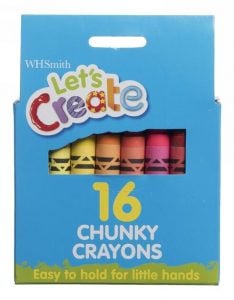
What Type of Pencils Will Best Fit Your Painting Needs?
Drawing is one of the favourite activities of children, which is very useful for their development. To make drawing interesting, you need to choose good tools for your child: wooden, plastic, crayons, watercolour pencils. Visual activity is extremely important for the development of a child’s fine motor skills, fantasy and imagination. Children love to draw, and the task of parents is to provide them with all the necessary tools. Let’s take a closer look at what today’s pencils are for children’s creativity.
Main types of pencils
Traditional wooden pencils. Coloured wooden pencils are familiar to everyone from childhood. They consist of a wooden body and a drawing rod. The colour range of such pencils usually includes from 6 to 18 but can go up to 100-120 shades. A significant drawback of wood pencils is the need to sharpen them periodically.
Coloured pencils made of wood are divided into school and art pencils. In the production of school pencils for children, first of all, the emphasis is on environmental friendliness, safety and affordability. This is the best option for a young beginner artist. High-quality pencils should have bright saturated colours and leave continuous lines on the paper, the lead should not break and crumble during sharpening, and the body should not fall apart.

Crayons. They are made from natural ingredients – wax and food colours. Wax crayons consist of a solid drawing rod, usually wrapped in a label. Kids love them, as they are very easy to draw with. When buying crayons, consider the age of the child. Excessively thin crayons can easily break, so they are more suitable for schoolchildren. The best option for kids from two years old is thickened pencils (diameter about 10 mm). They can be round or hexagonal, less often triangular, well adapted to the child’s hand.

Plastic pencils. Plastic pencils, which are noticeably harder than crayons, draw thinner and sharper lines. As a rule, plastic pencils are hexagonal or triangular in shape and are not inferior in strength to wooden models. Double-sided plastic crayons can have a narrow tip for drawing outlines and a wide tip for colouring. These pencils are best purchased for children 4-5 years old. Also available are models with a plastic body and a twist mechanism. The retractable painting core can be plastic or gel-based. The bright and rich colours of these pencils are very popular with children.
Watercolour pencils. If you want to add variety to your child’s creativity, it is worth buying watercolour pencils. The lead of such a pencil consists of pressed watercolours, and you can draw on dry or damp paper. Drawing on dry paper is no different from drawing with ordinary pencils, but then the drawing can be traced with a damp brush. The result is an unusual picture as if drawn with watercolours. When painting on wet paper, the effect will appear immediately. It is best to draw with watercolour pencils on special paper designed for this purpose.
Hopefully, this article was useful, and you know what you need to get for your child. To find all the above varieties, visit the WHSmith website.
WANT TO RECEIVE PERSONAL, STYLISH SUGGESTIONS TO YOUR EMAIL?
FILL OUT THE FOLLOWING FORM: